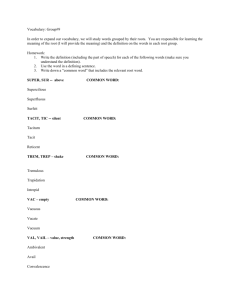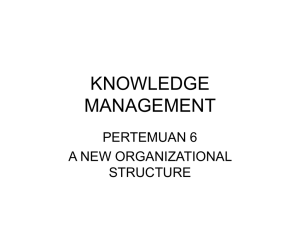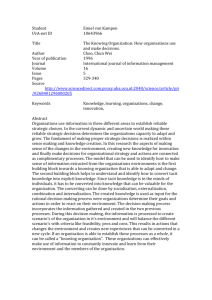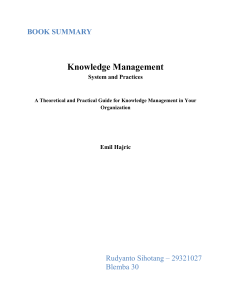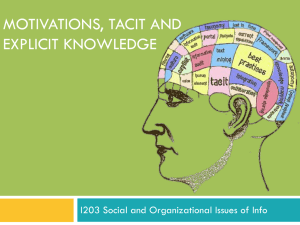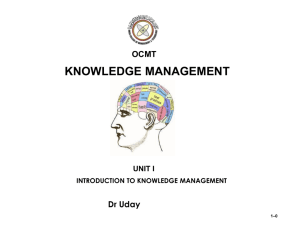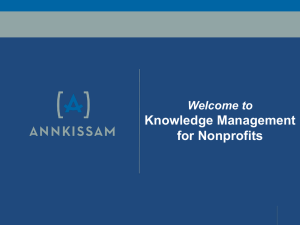Explicit and Tacit Knowledge in Global Virtual Teams
advertisement
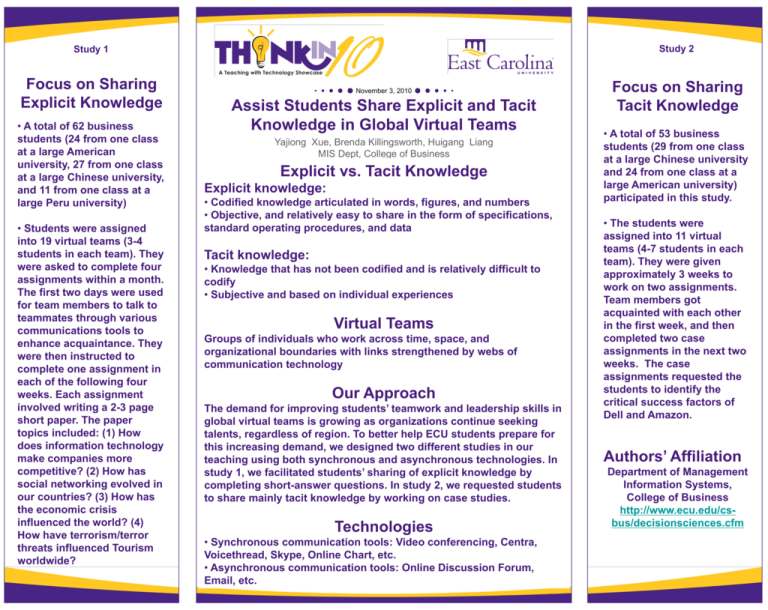
Study 2 Study 1 Focus on Sharing Explicit Knowledge • A total of 62 business students (24 from one class at a large American university, 27 from one class at a large Chinese university, and 11 from one class at a large Peru university) • Students were assigned into 19 virtual teams (3-4 students in each team). They were asked to complete four assignments within a month. The first two days were used for team members to talk to teammates through various communications tools to enhance acquaintance. They were then instructed to complete one assignment in each of the following four weeks. Each assignment involved writing a 2-3 page short paper. The paper topics included: (1) How does information technology make companies more competitive? (2) How has social networking evolved in our countries? (3) How has the economic crisis influenced the world? (4) How have terrorism/terror threats influenced Tourism worldwide? November 3, 2010 Assist Students Share Explicit and Tacit Knowledge in Global Virtual Teams Yajiong Xue, Brenda Killingsworth, Huigang Liang MIS Dept, College of Business Explicit vs. Tacit Knowledge Explicit knowledge: • Codified knowledge articulated in words, figures, and numbers • Objective, and relatively easy to share in the form of specifications, standard operating procedures, and data Tacit knowledge: • Knowledge that has not been codified and is relatively difficult to codify • Subjective and based on individual experiences Virtual Teams Groups of individuals who work across time, space, and organizational boundaries with links strengthened by webs of communication technology Our Approach The demand for improving students’ teamwork and leadership skills in global virtual teams is growing as organizations continue seeking talents, regardless of region. To better help ECU students prepare for this increasing demand, we designed two different studies in our teaching using both synchronous and asynchronous technologies. In study 1, we facilitated students’ sharing of explicit knowledge by completing short-answer questions. In study 2, we requested students to share mainly tacit knowledge by working on case studies. Technologies • Synchronous communication tools: Video conferencing, Centra, Voicethread, Skype, Online Chart, etc. • Asynchronous communication tools: Online Discussion Forum, Email, etc. Focus on Sharing Tacit Knowledge • A total of 53 business students (29 from one class at a large Chinese university and 24 from one class at a large American university) participated in this study. • The students were assigned into 11 virtual teams (4-7 students in each team). They were given approximately 3 weeks to work on two assignments. Team members got acquainted with each other in the first week, and then completed two case assignments in the next two weeks. The case assignments requested the students to identify the critical success factors of Dell and Amazon. Authors’ Affiliation Department of Management Information Systems, College of Business http://www.ecu.edu/csbus/decisionsciences.cfm


